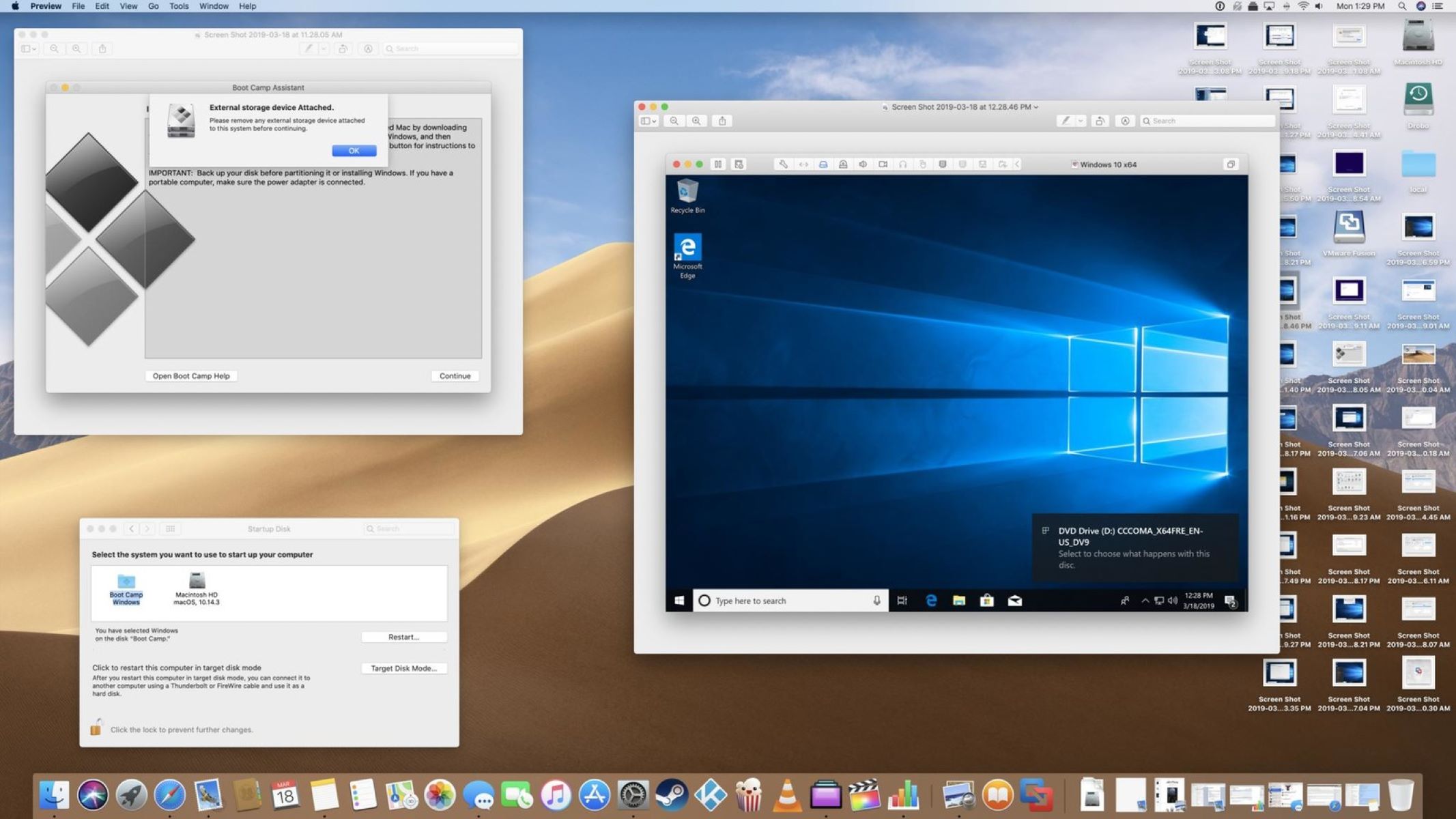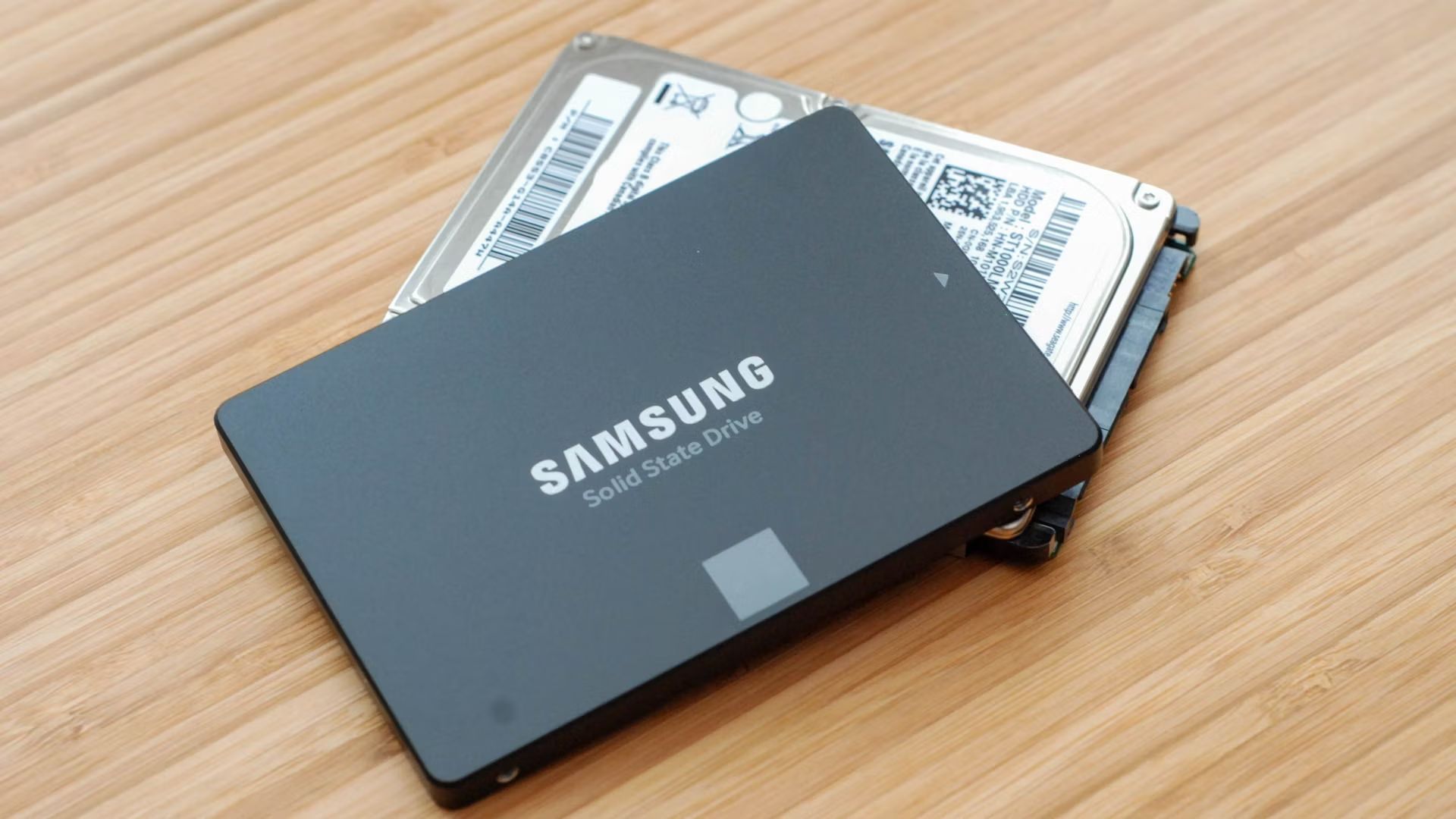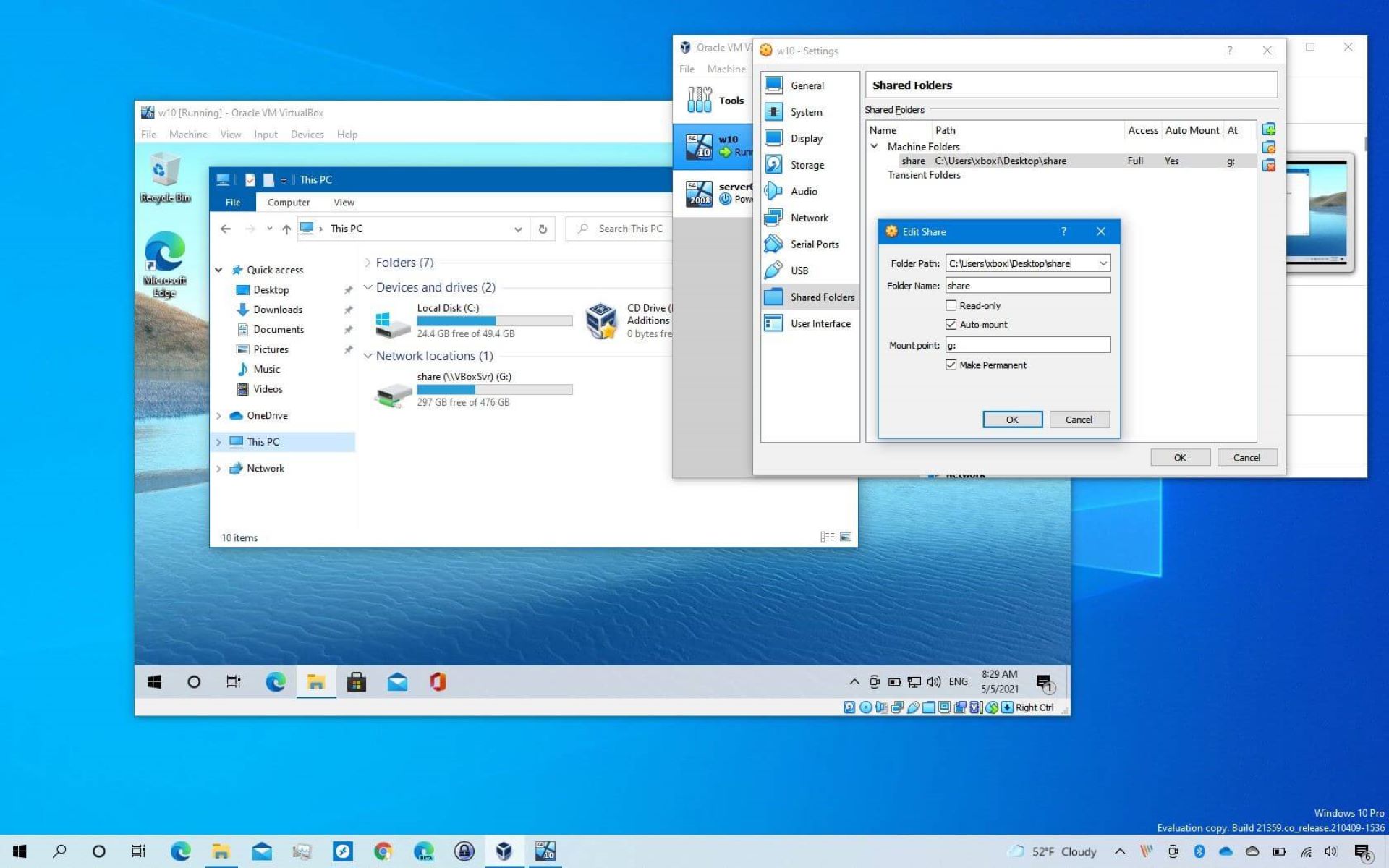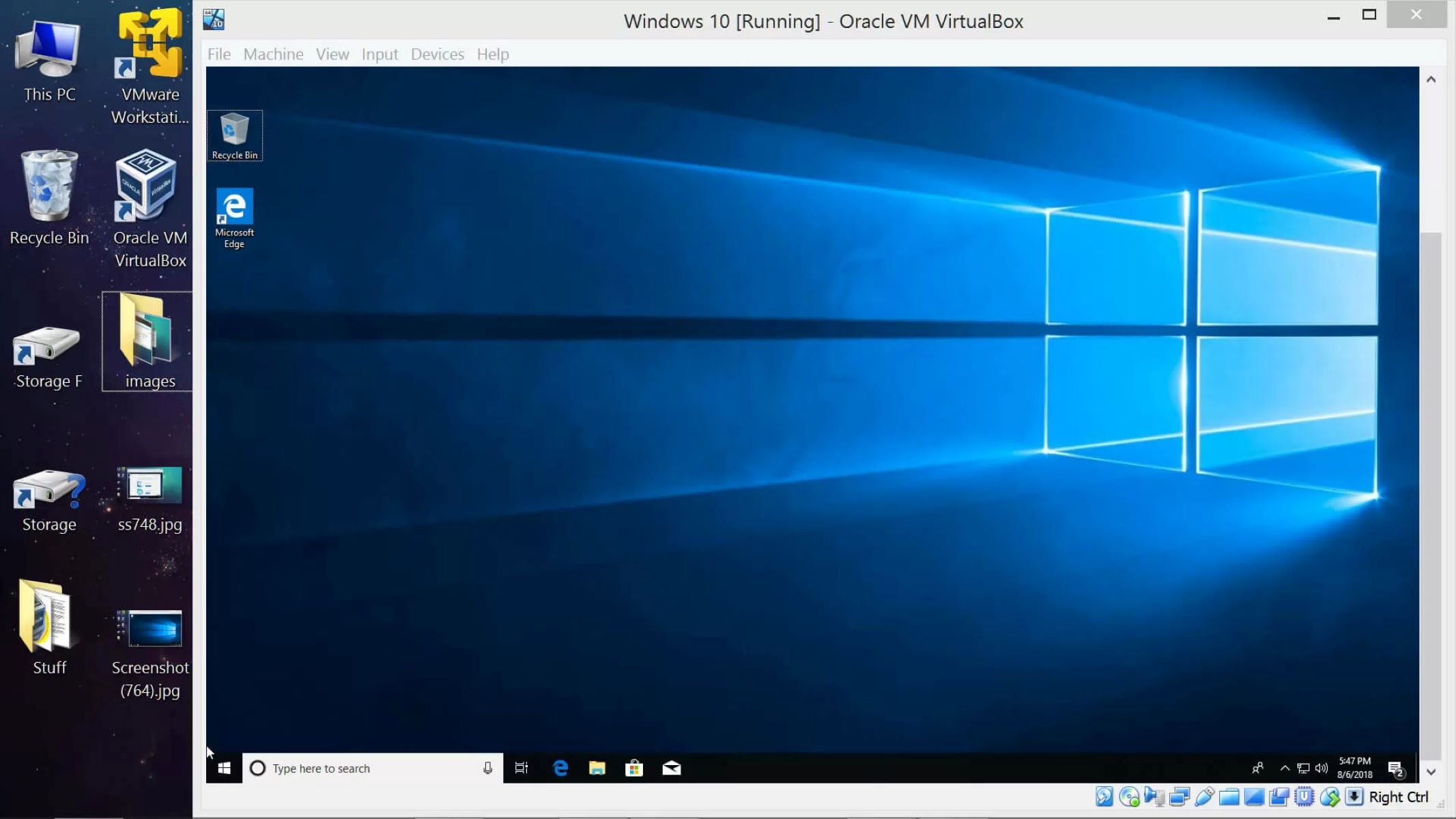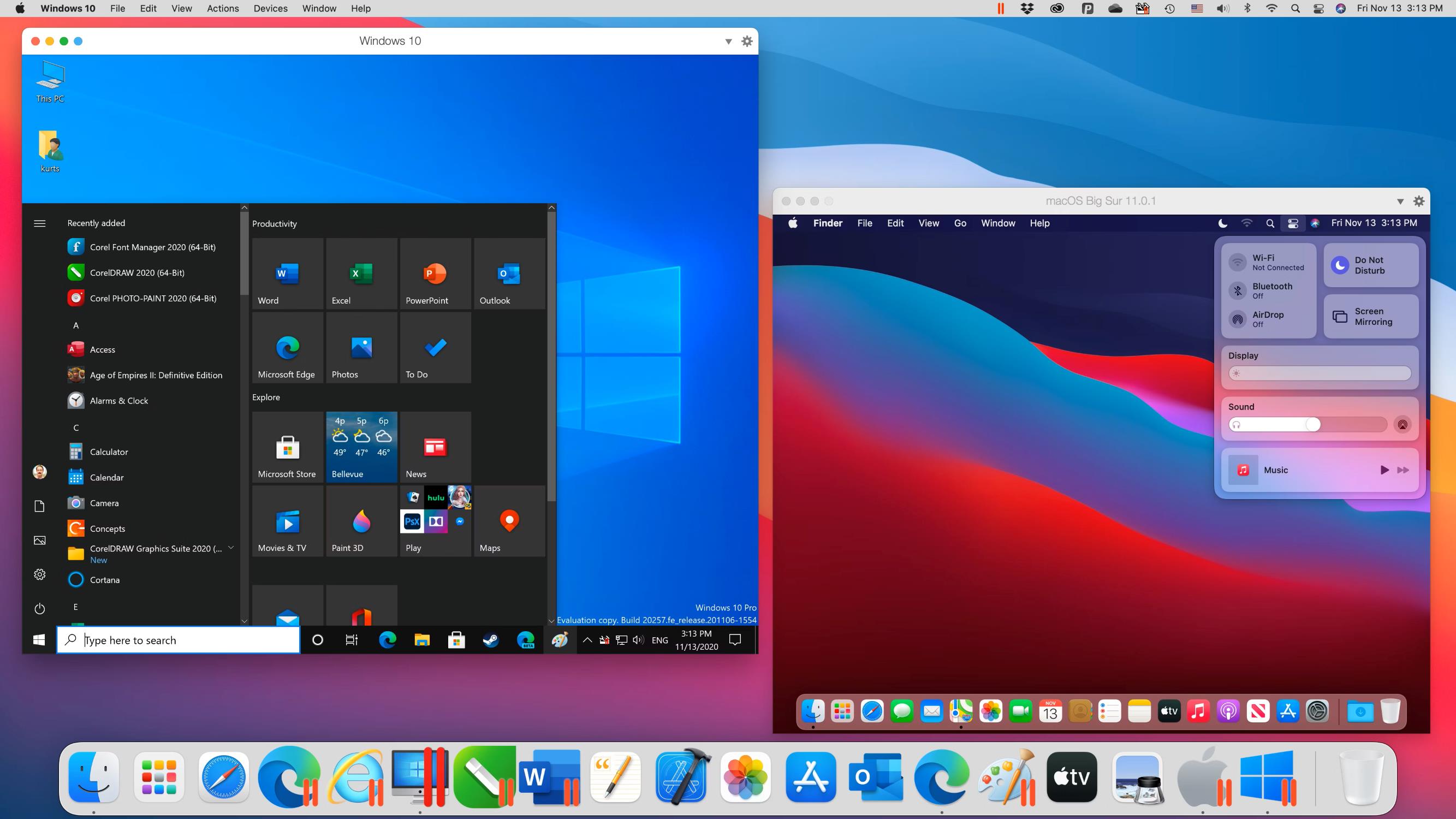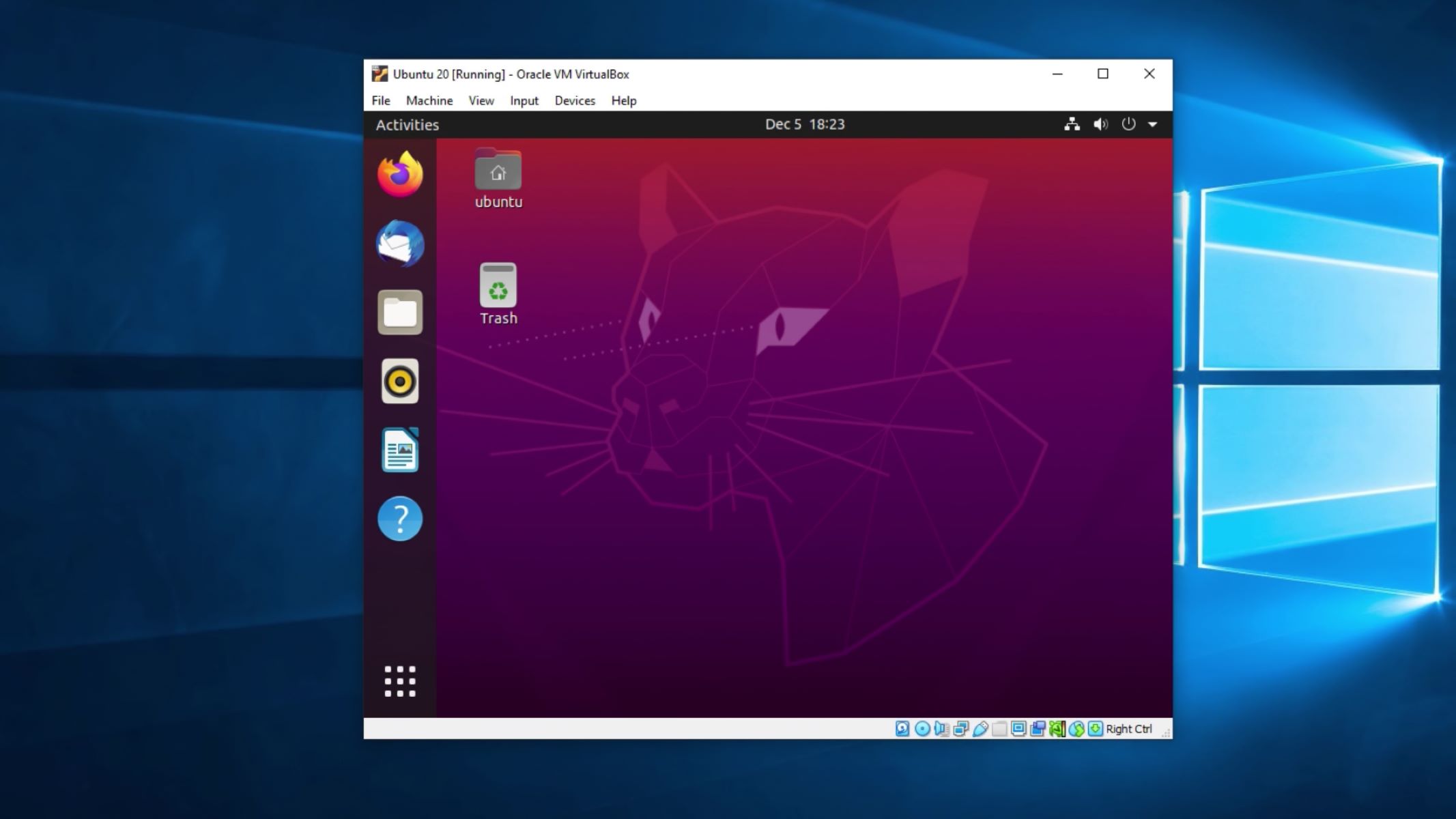Introduction
VirtualBox is a powerful virtualization software that allows you to run multiple operating systems simultaneously on a single host machine. It provides a convenient way to create and manage virtual machines, making it a popular choice for developers, system administrators, and anyone who wants to experiment with different operating systems without the need for separate hardware.
When using VirtualBox, one key factor to consider is the allocation of RAM (Random Access Memory) to each virtual machine. RAM plays a crucial role in the performance and stability of your virtual machines. It determines how efficiently the virtual machine can run applications, handle multitasking, and manage system resources.
The amount of RAM you allocate to a virtual machine directly impacts its ability to perform tasks and run applications smoothly. Insufficient RAM allocation can result in sluggish performance, frequent crashes, and overall decreased efficiency.
However, allocating too much RAM to a virtual machine can impede the overall performance of your host machine, affecting other running applications and processes. Therefore, finding the right balance in allocating RAM is essential for optimizing the performance of both the host machine and the virtual machines running on VirtualBox.
In this article, we will explore the importance of RAM allocation in VirtualBox and provide recommendations on how much RAM to allocate for different scenarios. We will also discuss various considerations and tips for optimizing RAM usage in VirtualBox.
Why is RAM important for VirtualBox?
RAM plays a critical role in the performance and functionality of VirtualBox. Here are some key reasons why RAM is important:
1. System performance: RAM is a primary component that determines the speed and responsiveness of your virtual machines. When you allocate an adequate amount of RAM to a virtual machine, it can efficiently handle various tasks and applications, resulting in smooth performance without lags or delays.
2. Multi-tasking capability: VirtualBox allows you to run multiple virtual machines simultaneously. Each virtual machine requires its own portion of RAM to function properly. By allocating sufficient RAM to each virtual machine, you enable them to run concurrently without experiencing performance bottlenecks or memory-related issues.
3. Application compatibility: Some applications require a certain amount of RAM to perform optimally. By allocating enough RAM to your virtual machines, you ensure that resource-intensive applications within the virtual environment can run smoothly without any hiccups or crashes.
4. System stability: Inadequate RAM allocation can lead to instability and frequent crashes of virtual machines. When there is insufficient memory to handle the demands of the virtual machine, it may struggle to execute tasks, resulting in system instability and poor performance. Allocating enough RAM helps maintain stability and prevents potential disruptions.
5. Resource sharing: Virtual machines share system resources with the host machine. When allocating RAM to virtual machines, consider the total amount of RAM available on your host machine. If you allocate too much RAM to virtual machines, it may severely impact the performance of the host, affecting other running applications and processes.
Overall, RAM serves as a vital resource for VirtualBox, ensuring optimal performance, stability, and compatibility of your virtual machines. By understanding the importance of RAM allocation, you can make informed decisions on how much RAM to allocate for each virtual machine and enhance your overall virtualization experience.
How much RAM does your host machine have?
Before determining the amount of RAM to allocate to your virtual machines in VirtualBox, it’s essential to understand the available RAM on your host machine. The amount of RAM accessible to your virtual machines will depend on your host machine’s total RAM capacity.
To check your host machine’s RAM capacity, follow these steps:
- On Windows: Right-click on the “Start” button, select “System,” and look for the “Installed RAM” section. Alternatively, you can open the Task Manager by pressing Ctrl+Shift+Esc and navigate to the “Performance” tab to see the available RAM.
- On macOS: Click on the Apple menu, select “About This Mac,” and go to the “Overview” tab. Under “Memory,” you will find the total installed RAM.
- On Linux: Open the terminal and enter the command “free -h” to display the amount of installed RAM.
Once you determine the total RAM capacity, you can make informed decisions on how much RAM to allocate to your virtual machines. It is recommended to leave a certain amount of RAM for the host machine to ensure smooth operation of the entire system.
It’s important to note that allocating all available RAM to virtual machines may lead to performance issues on the host machine or cause other applications to become unresponsive. Therefore, it’s ideal to leave some RAM for the host operating system to operate efficiently.
Consider the specific requirements of your host machine, such as the operating system, other software running, and the tasks you typically perform, when deciding the amount of RAM to allocate to virtual machines.
By properly assessing the RAM capacity of your host machine, you can allocate the right amount of RAM to your virtual machines in VirtualBox, ensuring optimal performance for both the host and the virtual environments.
Considerations when allocating RAM
Allocating the appropriate amount of RAM to your virtual machines in VirtualBox is crucial for optimal performance and stability. Here are some considerations to keep in mind when determining how much RAM to allocate:
1. Operating system requirements: Different operating systems have varying RAM requirements. For lightweight operating systems, allocating a smaller amount of RAM may be sufficient. However, resource-intensive operating systems, such as Windows or Linux distributions with graphical interfaces, may require more RAM to run smoothly.
2. Type of applications: Consider the type of applications you will be running within your virtual machines. Resource-intensive applications, such as video editing software or virtualization tools, generally require more RAM to perform optimally. Allocate enough RAM to accommodate the memory needs of these applications.
3. Number of virtual machines: If you plan to run multiple virtual machines simultaneously, you need to allocate enough RAM to each machine to ensure smooth operation. Divide the available RAM among the virtual machines based on their individual requirements and your usage patterns.
4. Multi-tasking requirements: Determine the level of multi-tasking you expect from your virtual machines. If you plan to run several applications concurrently within a virtual machine, allocate more RAM to handle the increased workload efficiently.
5. Host machine’s RAM capacity: As mentioned earlier, consider the total RAM capacity of your host machine when allocating RAM to virtual machines. Leave enough RAM for the host operating system and any other applications running on the host to avoid performance degradation.
6. Balancing RAM with other system resources: Remember that RAM is just one component that affects virtual machine performance. Consider the allocation of other resources such as CPU cores, disk space, and network bandwidth to maintain a balanced virtualization environment.
7. Future scalability: Anticipate any future needs for your virtual machines. If you plan to add more applications, increase the number of virtual machines, or run more resource-intensive tasks, allocate enough RAM to accommodate future growth.
By carefully considering these factors, you can make informed decisions when allocating RAM to your virtual machines in VirtualBox. Finding the right balance will ensure optimal performance, stability, and efficiency for your virtualization environment.
Recommended RAM allocation for different scenarios
The amount of RAM to allocate to your virtual machines in VirtualBox can vary based on different scenarios and requirements. Here are some recommendations for RAM allocation in common scenarios:
1. Running lightweight operating systems: For lightweight operating systems, such as Linux distributions without a graphical interface or minimal server installations, allocating 512MB to 1GB of RAM is generally sufficient. These operating systems have lower memory requirements and can run effectively with less RAM.
2. Running multiple virtual machines simultaneously: If you plan to run multiple virtual machines concurrently, allocate enough RAM to each machine to ensure smooth operation. As a general guideline, allocate at least 1-2GB of RAM to each virtual machine, depending on the operating system and the applications running within the virtual environment.
3. Running resource-intensive applications within the virtual machine: Resource-intensive applications, such as graphic design software, 3D modeling tools, or database servers, require more RAM to function efficiently. Allocate a minimum of 4GB of RAM to virtual machines running these applications. If your host machine has sufficient RAM capacity, consider allocating even more RAM to ensure optimal performance.
4. Balancing host machine and virtual machine performance: As mentioned earlier, it’s crucial to consider the RAM capacity of your host machine. Allocate an appropriate portion of available RAM to virtual machines while leaving enough RAM for the host operating system and other applications running on the host. A reasonable guideline is to allocate around 70-80% of your host machine’s total RAM to virtual machines.
5. Future scalability: If you anticipate increasing demands on your virtual machines or plan to run more resource-intensive applications in the future, allocate additional RAM to accommodate future scalability. Consider allocating extra RAM to handle potential growth without impacting performance.
These recommendations serve as starting points and can be adjusted based on your specific requirements and system resources. Remember that RAM allocation is not a fixed rule and may need to be adjusted as your virtualization needs evolve.
By following these recommendations, you can ensure that your virtual machines in VirtualBox have sufficient RAM to perform optimally for different scenarios, resulting in smooth operation and enhanced productivity within your virtualization environment.
Running lightweight Operating Systems
Running lightweight operating systems in VirtualBox is a common use case when you need to perform basic tasks or experiment with different operating systems without high resource demands. These lightweight operating systems have lower memory requirements and can run efficiently with smaller RAM allocations. Here are some recommendations for allocating RAM when running lightweight operating systems:
a) Linux distributions without a graphical interface: If you are running a minimal version of a Linux distribution without a graphical interface, such as Ubuntu Server or CentOS Minimal, allocating 512MB to 1GB of RAM is generally sufficient. These operating systems are designed to run efficiently with minimal resources and can perform basic server tasks effectively within this RAM range.
b) Linux distributions with a lightweight graphical interface: Some Linux distributions, such as Xubuntu or Lubuntu, come with lightweight graphical interfaces that require slightly more RAM than the server versions. Allocating 1GB to 2GB of RAM should be enough to run these distributions smoothly within VirtualBox.
c) Other lightweight operating systems: Apart from Linux distributions, there are lightweight operating systems like Chrome OS or lightweight versions of Windows, such as Windows 10 S. These operating systems typically have modest memory requirements. Allocating 1GB to 2GB of RAM should be sufficient for running these lightweight operating systems in VirtualBox.
Remember that the RAM allocation for running lightweight operating systems can vary based on your specific requirements and the number of concurrent tasks you plan to perform within the virtual machine. It’s always a good practice to start with a conservative RAM allocation and adjust it accordingly based on the performance and responsiveness of the virtual machine.
Allocating an appropriate amount of RAM ensures that the lightweight operating systems run smoothly within VirtualBox, allowing you to perform basic tasks, test software, or familiarize yourself with different operating systems without excessive resource utilization.
Running multiple virtual machines simultaneously
Running multiple virtual machines simultaneously in VirtualBox is a common scenario, especially for developers or IT professionals who need to test different configurations or simulate complex network environments. When running multiple virtual machines concurrently, it’s important to allocate sufficient RAM to each machine to ensure smooth performance and prevent resource bottlenecks. Here are some recommendations for allocating RAM when running multiple virtual machines:
a) General guideline: As a general guideline, allocate at least 1-2GB of RAM to each virtual machine when running multiple instances simultaneously. This allocation provides enough memory for the virtual machine to run the operating system and perform basic tasks without experiencing significant performance degradation.
b) Consider the total available RAM: Take into account the total available RAM on your host machine and divide it among the virtual machines based on their individual requirements. For example, if your host machine has 8GB of RAM and you want to run four virtual machines, you can allocate 2GB of RAM to each machine.
c) Assess the workload of each virtual machine: Consider the workload and tasks you plan to perform within each virtual machine. If some virtual machines will be running resource-intensive applications or performing computationally heavy tasks, allocate more RAM to those machines to ensure optimal performance.
d) Prioritize RAM allocation: If you have limited RAM resources and need to prioritize certain virtual machines over others, allocate more RAM to the critical machines while reducing the allocation for less critical ones. This allows you to meet the resource demands of the most important virtual machines without overcommitting RAM on the host machine.
e) Monitor and adjust: Keep an eye on the performance of the virtual machines during usage. If you notice any lag, unresponsiveness, or excessive swapping (high disk activity due to insufficient RAM), consider adjusting the RAM allocation for the affected machines. Increasing the allocated RAM may improve their performance.
By allocating the appropriate amount of RAM to each virtual machine when running multiple instances simultaneously, you can ensure smooth operation and prevent performance degradation. Proper distribution of resources among the virtual machines allows for efficient multitasking and seamless execution of tasks within each virtual environment.
Running resource-intensive applications within the virtual machine
Running resource-intensive applications within a virtual machine is a common requirement for tasks such as software development, graphic design, data analysis, or running complex server environments. These applications often have high memory and processing requirements. Allocating sufficient RAM to the virtual machines running these applications is crucial for optimal performance. Here are some recommendations for allocating RAM when running resource-intensive applications:
a) Determine the application’s RAM requirements: Research the recommended RAM specifications for the specific resource-intensive application you plan to run. The application’s documentation or system requirements should provide guidance on the necessary RAM allocation. Allocate at least the recommended amount of RAM or more, if possible, to ensure smooth application performance.
b) Assess the complexity of the tasks: Consider the complexity and size of the tasks you will perform within the application. More complex operations, such as rendering large video files or running complex algorithms, may require additional RAM to handle the increased workload. Allocate additional RAM to accommodate these resource demands.
c) Allocate a minimum of 4GB of RAM: As a general guideline, allocate a minimum of 4GB of RAM to virtual machines running resource-intensive applications. This allocation provides ample memory for the application to run smoothly without excessive swapping or performance degradation.
d) Consider host machine limitations: Be mindful of the total available RAM on your host machine. Ensure that allocating additional RAM to virtual machines running resource-intensive applications does not significantly impact the performance of the host machine or other applications running on it.
e) Monitor performance and adjust as needed: While running resource-intensive applications, monitor the performance of the virtual machine and the application. If you notice any significant slowdown or high memory usage, consider increasing the RAM allocation. Conversely, if the application runs smoothly with a lower RAM allocation, you may be able to free up resources for other virtual machines or applications.
f) Utilize dynamic memory allocation: VirtualBox offers dynamic memory allocation, which allows the virtual machine to adjust its RAM allocation based on current usage. Consider enabling this feature for resource-intensive applications, as it optimizes RAM usage and ensures that available memory is utilized effectively.
By allocating a sufficient amount of RAM to virtual machines running resource-intensive applications, you can ensure smooth performance, minimize lag, and prevent crashes. Be mindful of the specific requirements of the applications and adjust the RAM allocation as needed to meet the demands of these resource-intensive tasks.
Balancing RAM allocation with other system resources
When allocating RAM to virtual machines in VirtualBox, it’s important to consider the overall balance of system resources. While RAM is a critical component for virtual machine performance, it’s not the only resource that needs to be considered. Here are some key factors to keep in mind when balancing RAM allocation with other system resources:
1. CPU cores: The CPU cores available on your host machine play a vital role in the performance of virtual machines. Allocating too much RAM to a virtual machine without considering CPU cores may result in suboptimal performance. Ensure that you have enough CPU cores allocated to each virtual machine to handle the processing requirements effectively.
2. Disk space: Disk space is another crucial resource to consider. VirtualBox creates virtual hard disks for each virtual machine, and allocating excessive RAM to a virtual machine can result in limited disk space for the host machine or other virtual machines. Ensure that you have enough free disk space to avoid any storage-related issues when allocating RAM.
3. Network bandwidth: Virtual machines often require network connectivity to function properly. Consider the network bandwidth available on your host machine and ensure that it can handle the network traffic required by multiple virtual machines. Insufficient network bandwidth can lead to network congestion and slow down the performance of the virtual machines.
4. GPU utilization: If your virtual machines utilize graphics processing units (GPUs) for tasks such as rendering or GPU-accelerated applications, ensure that the GPU resources are allocated appropriately. Balance the GPU resources alongside RAM allocation to avoid overloading the GPU or causing conflicts with other virtual machines or applications that require GPU utilization.
5. Host machine performance: It’s essential to consider the impact of allocating too much RAM to virtual machines on the performance of the host machine. If the host machine runs out of available RAM due to excessive virtual machine allocations, it may cause overall system slowdowns and affect the performance of other applications running on the host machine. Find a balance that ensures smooth operation of the host machine alongside efficient virtual machine performance.
6. Monitor resource usage: Regularly monitor the resource usage of your host machine and virtual machines. Utilize tools provided by VirtualBox or third-party software to analyze CPU usage, disk space consumption, network bandwidth usage, and RAM utilization. This will help you identify any resource bottlenecks or imbalances, allowing you to make appropriate adjustments to optimize overall system performance.
By balancing RAM allocation with other critical system resources, you can create an efficient virtualization environment. Proper resource allocation ensures optimal performance and stability for both the host machine and the virtual machines, allowing you to maximize productivity and seamlessly run multiple virtual environments simultaneously.
Tips for optimizing RAM usage in VirtualBox
Optimizing RAM usage in VirtualBox is crucial for ensuring efficient performance and resource utilization. By following these tips, you can make the most of the available RAM and enhance the overall virtualization experience:
1. Start with conservative RAM allocations: Begin by allocating a conservative amount of RAM to each virtual machine. Monitor their performance and adjust the allocation as needed. Avoid overallocating RAM initially, as it can lead to inefficient resource utilization.
2. Utilize dynamic memory allocation: Enable dynamic memory allocation in VirtualBox, allowing the virtual machine to adjust RAM usage based on current demand. This feature optimizes resource utilization by dynamically allocating or deallocating RAM as required.
3. Prioritize RAM for active virtual machines: Allocate more RAM to virtual machines that are actively in use and running resource-intensive applications. Allocate less RAM to virtual machines that are idle or performing light tasks. This allows you to optimize RAM usage and distribute resources based on current needs.
4. Consider guest additions: Install Guest Additions in the virtual machines. This software package provides additional features and improvements, including better integration between the host and guest machines, which can help optimize resources such as RAM and CPU usage.
5. Limit background processes: Minimize or disable background processes and services within the virtual machines that consume RAM unnecessarily. This reduces the overall RAM usage and improves the performance of the virtual machines. Only keep essential processes running to optimize resource utilization.
6. Allocate RAM based on workload: Adjust the RAM allocation based on the workload within the virtual machine. If you are running memory-intensive applications, allocate more RAM to accommodate their requirements. For lighter tasks, reduce the RAM allocation to free up resources for other virtual machines.
7. Optimize host machine: Ensure that your host machine is optimized for virtualization. Close unnecessary applications and processes running on the host machine to free up RAM for the virtual machines. This ensures that the host machine can deliver optimal performance alongside the virtual environments.
8. Regularly update VirtualBox: Stay updated with the latest version of VirtualBox to take advantage of performance improvements and bug fixes. Newer versions often include optimizations that enhance resource management and improve RAM usage.
9. Monitor and troubleshoot: Regularly monitor the performance of your virtual machines and host machine. Utilize monitoring tools within VirtualBox or third-party software to identify resource bottlenecks and troubleshoot any issues related to RAM usage. This helps you fine-tune the allocation for optimal performance.
By implementing these tips, you can optimize RAM usage in VirtualBox and maximize system resources. Efficient RAM allocation ensures optimal performance, resource utilization, and stability within your virtualization environment.
Conclusion
Allocating the appropriate amount of RAM to virtual machines in VirtualBox is crucial for optimal performance and efficiency. By considering factors such as the type of operating system, resource-intensive applications, and the total available RAM on your host machine, you can make informed decisions and allocate RAM effectively. Balance RAM allocation with other system resources, such as CPU cores, disk space, and network bandwidth, to ensure a well-rounded virtualization environment.
For lightweight operating systems, allocating 512MB to 1GB of RAM is usually sufficient. When running multiple virtual machines simultaneously, allocate at least 1-2GB of RAM to each machine. Resource-intensive applications typically require a minimum of 4GB of RAM. Always monitor performance and adjust the allocation as needed to optimize resource usage.
To further optimize RAM usage, use features like dynamic memory allocation and Guest Additions, prioritize active virtual machines, limit unnecessary background processes, and keep your host machine optimized. Regularly monitor the performance of your virtual machines and troubleshoot any issues that may arise.
By following these guidelines and optimizing RAM usage, you can create a well-optimized virtualization environment with smooth performance, efficient resource allocation, and enhanced productivity. Adapt these recommendations based on your specific requirements and keep in mind the dynamic nature of virtual machine usage.
Remember, finding the right balance in allocating RAM is essential for maintaining the performance and stability of both the host machine and the virtual machines in VirtualBox. With proper RAM allocation and optimization, you can unleash the full potential of virtualization and enjoy a seamless and efficient computing experience.









